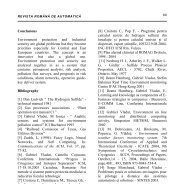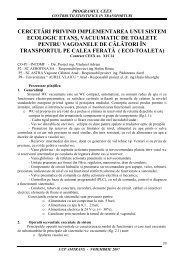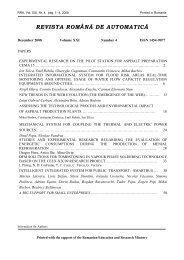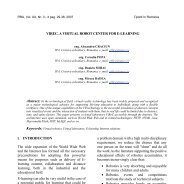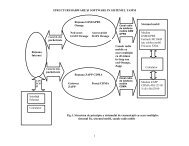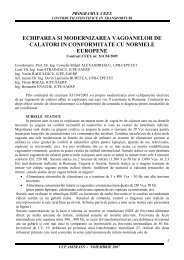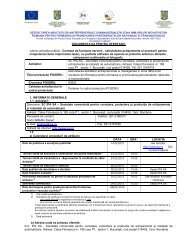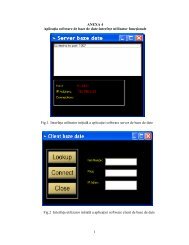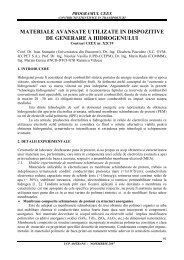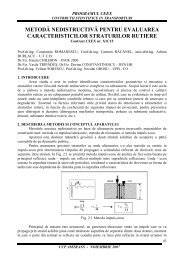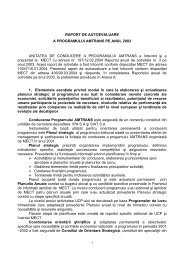0_ CUPRINS - IPA SA
0_ CUPRINS - IPA SA
0_ CUPRINS - IPA SA
You also want an ePaper? Increase the reach of your titles
YUMPU automatically turns print PDFs into web optimized ePapers that Google loves.
To determine the specific requirements of a logistical system it is necessary a good knowledge of the entire<br />
environment, of the geographic location system in which the system is to be implemented and used, the users<br />
and the availability of the technologies and the associated resources, the procurement system, etc. Therefore<br />
it is necessary:<br />
• to take a total top-down system approach, with the logistic support infrastructure, included as a major<br />
subsystem and directed to a specific set of objectives;<br />
• to take a total life cycle approach;<br />
• to make an agile and extremely flexible configuration of the logistic support infrastructure, based on an<br />
open architecture.<br />
The system-level requirements suffer from constant requirements change, therefore the integration of these<br />
requirements (both horizontally and vertically) with other systems is becoming more complex.<br />
3. The integrated solution<br />
For the implementation of the system requirements, the following solutions (see Figure 2) were defined:<br />
• WLAN with the existing Ethernet network and mobile Internet connection, compliant with the current<br />
standard security level;<br />
• passive RFID hardware and software solutions for system tag enrollment in order to implement an<br />
automatic identification of vehicle and integration with the applications controlling the weighing process.<br />
• software solutions for data consolidation and database storage of the cargo vehicle identification data, of<br />
the bruto and tara weighing data, corresponding to a weighing ticket;<br />
• communication software for client-server bidirectional data transfer between the local points for vehicle<br />
weighting and the local administrative section, and between this and the central remote server for data<br />
collection and processing. Microsoft SQL Server replication services through wireless support are used;<br />
• a web solution for reporting purposes alongside the supply chain, providing customized content;<br />
• data level integration with the existing economic and financial management systems.<br />
Figura 2 The integrated delivery system solution, based on RFID and wireless technologies<br />
The RFID and the communication system are the integrator elements supporting the automated data<br />
collection through the supply chain.<br />
4. Conclusions<br />
26




